VLC Media Player is a veteran media player for Windows devices. However, we have noticed that sometimes, VLC is having some audio issues, and we are going to fix it. So, if the VLC audio is not working on your computer, follow the solutions mentioned here.
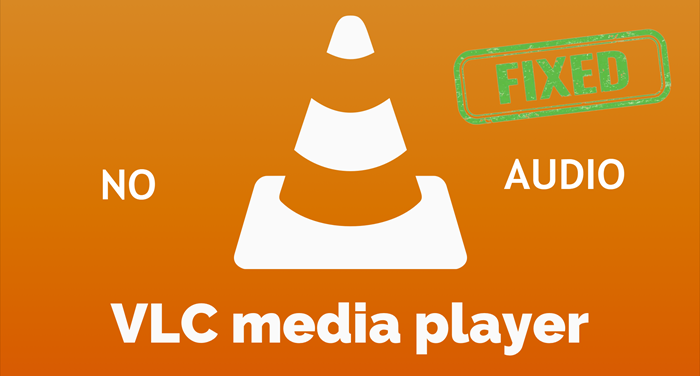
You’re probably on this page because you’re experiencing this issue. It’s usually not a serious issue, so you don’t have to worry. This is a troubleshooting guide for fixing VLC audio problems and getting back your sounds for good.
No sound or audio in VLC on Windows 11
If you’re playing a video on VLC and it produces no sound, I recommend that you follow the troubleshooting steps below to fix it.
- Unmute your audio.
- Enable VLC audio.
- Reset your VLC audio preferences.
- Change the VLC output module.
- Enable the system’s sound devices.
- Enable the VLC audio track.
- Update VLC Media Player.
1] Unmute your audio
First of all, let us unmute the Audio in VLC from the Volume Mixer.
To do so, play a video on VLC. While the video plays, right-click on the Volume icon at the right side of your taskbar and click on the Open Volume Mixer option.
Here, you’ll see the mixer for the various open devices and programs currently playing audio. Check beneath the mixer for VLC Player and ensure no red circle is beside the speaker icon.
If there’s a red circle, it means that VLC is muted. Click on the speaker to unmute the player and bring back your audio.
Also, the volume may be unmuted but low. In this case, click and drag it up to increase the volume of the VLC Media Player.
Now, let us unmute audio from the VLC Media Player.
For this, play a video in VLC, and if there’s no sound, go to the volume control area on the interface. If the player is muted, you’ll see a red and white x on the speaker icon beside the volume control. Click on the speaker icon to remove the x and unmute your player audio.
2] Enable VLC audio
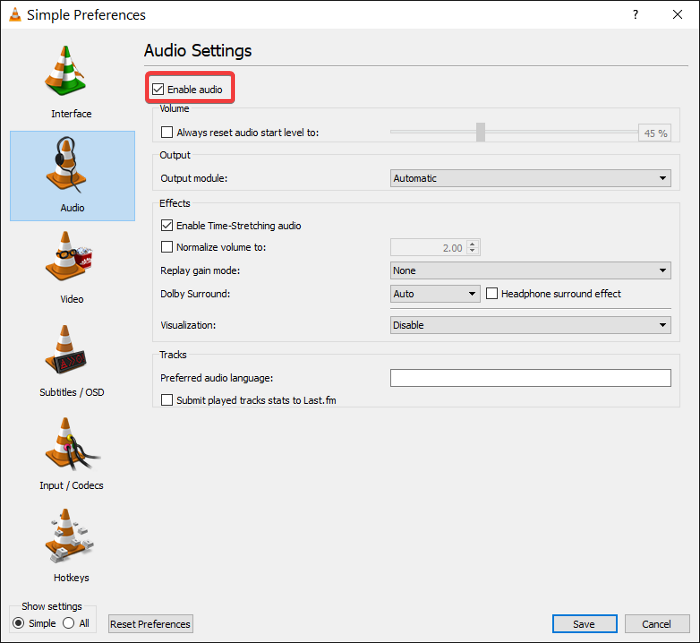
Another simple setting that can take away your VLC media’s sounds is contained in the audio preferences. Open VLC Media player and go to Tools > Preferences.
Finally, Click on Audio and check the Enable audio box to enable the sound.
3] Reset your VLC audio preferences
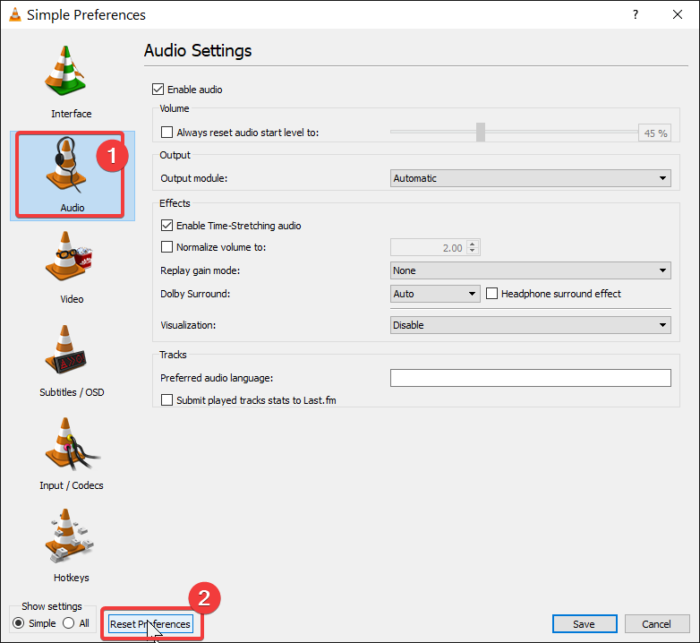
You may not be getting audio from VLC Media Player due to poor settings in its audio preferences. In most cases, the default audio settings work flawlessly. So, for this solution, we’re going to return your audio preferences to their default settings.
Go to the Tools menu and click on Preferences.
Navigate to the Audio section of the VLC Media Player and click on the Reset Preferences button.
4] Change the VLC output module
The player can use a variety of output modules to produce audio. You may not be getting sounds if there’s a problem with the module selected in VLC Player’s audio preferences. To fix this, launch VLC and click on the Tools menu.
Go to Preferences and click on Audio. Click on the dropdown menu for the Output module option and set it to Automatic. Save your settings and see if the audio starts to play.
If this doesn’t help, then return to the Audio preferences and try other output modules one after the other. Remember to hit Save after switching the output modules.
5] Enable the system’s sound devices
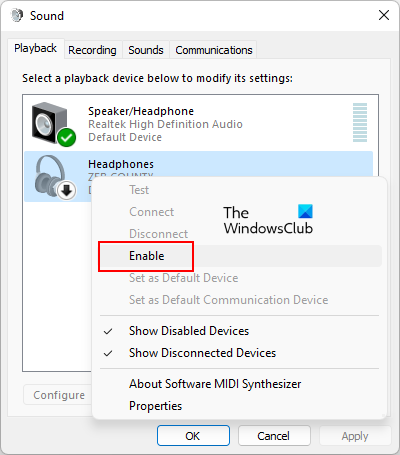
Here’s a simple trick that can fix your VLC audio issues. Open the Control Panel and go to Hardware and Sound. Select Sound from the right-hand panel.
A new dialog box opens, which shows the playback devices currently installed on your PC. Here, find your audio playback device. If it’s enabled, you’ll see a green checkmark on the icon. If it’s not, right-click on it and hit the Enable option.
I recommend that you perform this action for all the audio playback devices shown on this screen. Click on the Apply button and hit OK to confirm your changes and close the dialog box.
6] Enable the VLC audio track
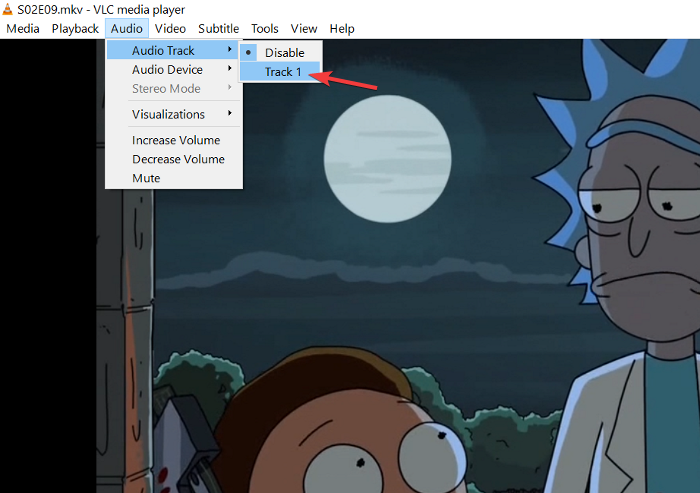
The audio you hear comes in an audio track, and if this track is disabled, the video will play with no sound. Open the VLC Media Player and play a video. Next, click on the Audio menu and go to Audio Track from the context menu.
If you see that it’s set to Disable, then that’s the cause of your problem. Click on Track 1 or any other track listed here to enable the audio track.
In some cases, the audio track is already enabled. You can try disabling it and enabling it back to fix the issue. I have no idea why this works, but it has surely fixed the VLC audio issues for many Windows users.
7] Update VLC Media Player
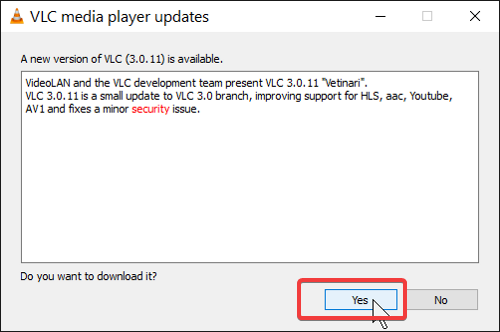
If you’ve tried all of the above solutions with no luck, then it could be that there’s a bug in your VLC Media Player version. The program may also be outdated and no longer compatible with your sound drivers.
The good news is that fixing bugs is one of the primary reasons why software updates exist. Don’t worry; you don’t have to pay to update VLC because it’s freeware.
Open the application, click on the Help menu, and Check for Updates. VLC immediately tells you whether or not your application is up-to-date. If it finds an update, hit Yes on the prompt asking if you want to download it.
Upon completing the download, click on the Install button and select Yes to allow the app to make changes to your device. Click all the Next and follow the on-screen instructions to apply the VLC update. Finally, hit Finish.
These are our recommended fixes for troubleshooting sound problems in VLC Media Player. On the rare occasion that these don’t solve your problem, look at our computer audio troubleshooting guide for even more insights.
Why is there no sound on my VLC?
One of the primary ones includes muted volume settings within VLC or on the system. Another plausible cause can be an incorrect audio output device selected in VLC preferences or an unsupported audio codec in the media files, Out of which all can be easily solved. It’s also necessary to make sure that users are not working on an outdated VLC Version or faulty audio drivers.
Read: Fix common VLC Errors, Problems, and Issues on Windows PC
How do I fix audio and video out of sync in VLC?
If users are facing issues in syncing audio and video, the steps to fix this are quite easy. Just launch the video in VLC, go to the menu bar, and click on the Tools option. Now, select the Effect and Filters tab, navigate to the Audio/Video tab, and enter Track Synchronization Value. Using Positive or negative values can delay or hasten the audio respectively, experiment with the values until the audio and video are in sync.
Also Read: VLC Media Player skipping and lagging on Windows 11.
Leave a Reply